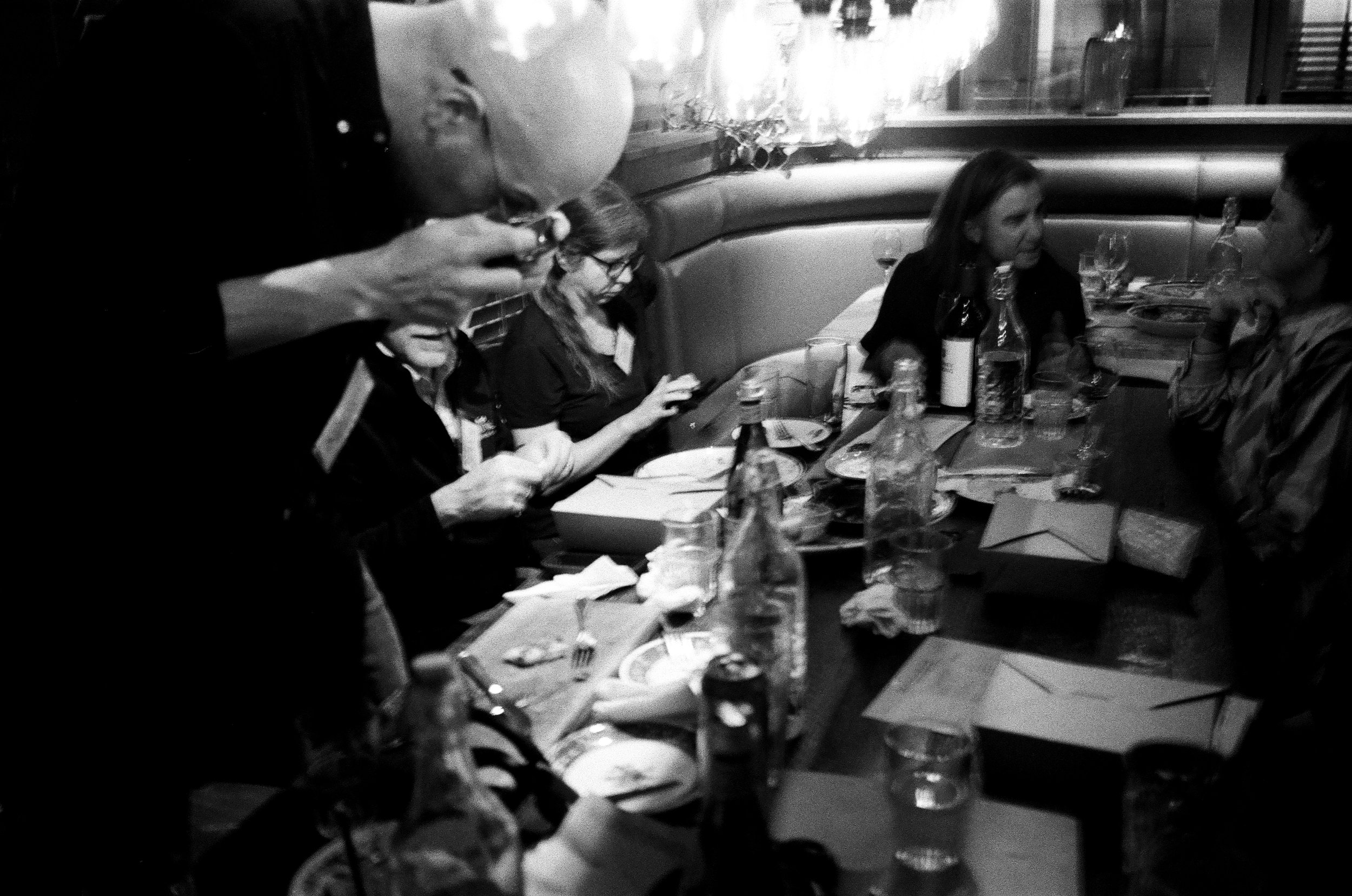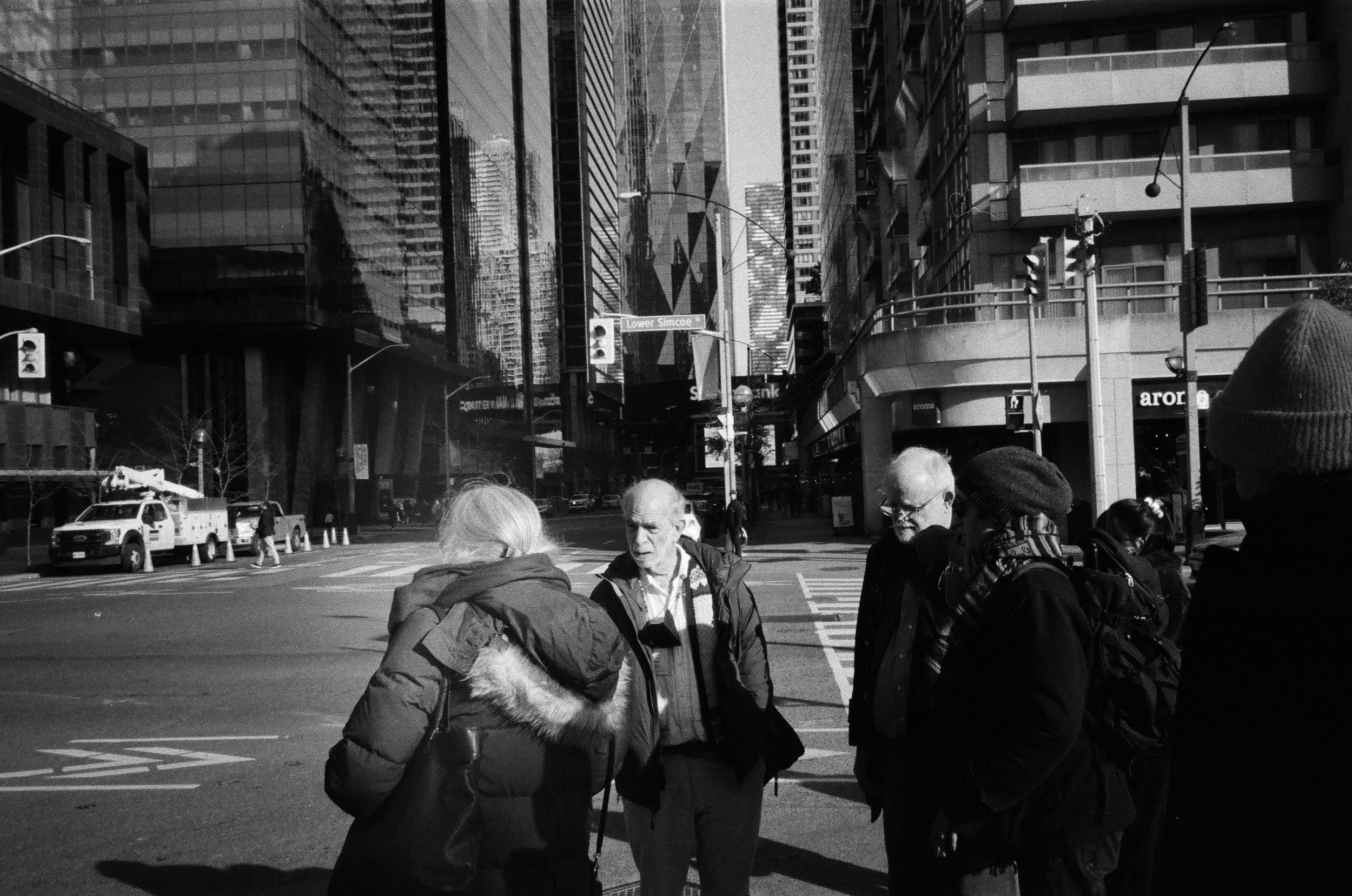
Visual Research Conference
About the Society for Visual Anthropology’s Visual Research Conference
The Society for Visual Anthropology’s Visual Research Conference (VRC) is an annual gathering that takes place in the day and a half before the start of the Annual Meeting of the American Anthropological Association. Since 1985 the VRC has been a unique and engaging event bringing visual and multimodal anthropologists at all career stages together for constructive conversation around works-in-progress and network building.
This year the VRC takes place on November 17-19, 2025 in New Orleans, LA, in the same venue as the American Anthropological Association Meeting (Nov. 19 - 24).The VRC starts Monday evening with a group dinner for all participants.
In-person presentations are scheduled all day Tuesday and half of Wednesday, ending at the official start of the AAA meeting. This schedule provides flexibility in attendance and time between presentations to meet informally with other participants.
The Visual Research Conference provides an opportunity for professionals and students to dialogue about visually engaged works-in-progress. Conventionally there are no specific themes to follow for general submissions, though we are most interested in new ideas and projects under development in the study of visual signification, visual communication, and visual forms of representation, and/or utilizing visual media (photo, film, web, polymedia, intermedia, multimodal media). Please note that we are no longer inviting “installations”, but welcome proposals for presentations about works-in-progress of all mediums and forms relevant to anthropology.
Forty-minute time slots (rather than the usual 15-minute conference presentation) allow for substantive presentations that include viewing of visual material as well as ample dialogue with an actively participating audience. Presenters will be asked to demonstrate their works-in-progress in 2 or 3 segments, allocating time for discussion and feedback throughout the presentation. Further discussion takes place after presentations for networking and exchange of ideas.

VRC Lunchtime, Toronto, 2023. Photo by Gaurav Datta.

Toronto, 2023. Photo by Gaurav Datta

Tampa, 2024. Photo by Gaurav Datta

Tampa, 2024. Photo by Gaurav Datta

Tampa, 2024. Photo by Gaurav Datta

Tampa, 2024. Photo by Gaurav Datta

Tampa, 2024. Photo by Gaurav Datta

Toronto, 2024. Photo by Gaurav Datta

VRC Lunchtime, Toronto, 2023. Photo by Gaurav Datta.
New Orleans 2025: Visual Research Conference Schedule
NOVEMBER 18th
9:30-9:45 Introductions and Welcome
9:45-10:30 Brian Young (UCLA)
Project Title: Multispecies Ethnography, Art, and Virtual Reality inBhutanese Highland Ecosystems.
10:40-11:25 Ashley May (Brown University)
Project Title: Signifyin’ Blackhood in Toni Cade Bambara’s “The Golden Bandit”: Or, Notes for the Revolution that is here.
11:30-11:40 Break
11:40-12:25 Aiko Dzikowski (UCLA)
Project Title: Japanese American Princess
12:30-1:15 William Lempert (Bowdoin College)
Project Title: Timelines: Honoring Vision in Posthumous Documentary Film Editing.
1:15-2:30 Lunch
2:30-3:15 Dafina Gashi (Johannes Gutenberg-Universität Mainz)
Project Title: Beauty Practices and the Pursuit of Belonging Among Young Women in Post-Independence Kosovo.
3:20-4:05 Lydia Donohue (University of Manchester)
Project Title: Tactile Fieldnotes
4:10-4:55 Andrew Cambron and Georgina Ramsay
(University of Delaware)
Project Title: Driven: Refugee Resettlement and the American Dream
NOVEMBER 19th
9:30-9:40 Introductions
9:45-10:25 Max Bowens (Harvard)
Project Title: Male Fantasies: Bodycams and White Terror in the American Midwest.
10:30-11:15 Suraiya Luecke (UCLA)
Project Title: Collaborative Underwater Elicitation: Bridging Environment and Experience in Blue Spaces.
11:20-11:30 Break
11:30-12:15 Jacoub Reyes (Brown University)
Project Title: Eco: Al-Andalus Amalgam
12:20-1:05 Hazal Hürman (Princeton University)
Project Title: All at Once: Children of Antep Narrate the Twin Earthquakes
1:10 Conclusion
******************
Program Organizers: David Syring, Ashley Stinnett, Jerome Crowder, Kate Hennessy, Gaurav Datta and Steve Moog
Social Media Intern: Sienna Ruiz
Recent Programs
-
NOVEMBER 18th
9:30-9:45 Introductions and Welcome
9:45-10:30 Brian Young (UCLA)
Project Title: Multispecies Ethnography, Art, and Virtual Reality inBhutanese Highland Ecosystems.10:40-11:25 Ashley May (Brown University)
Project Title: Signifyin’ Blackhood in Toni Cade Bambara’s “The Golden Bandit”: Or, Notes for the Revolution that is here.11:30-11:40 Break
11:40-12:25 Aiko Dzikowski (UCLA)
Project Title: Japanese American Princess12:30-1:15 William Lempert (Bowdoin College)
Project Title: Timelines: Honoring Vision in Posthumous Documentary Film Editing.1:15-2:30 Lunch
2:30-3:15 Dafina Gashi (Johannes Gutenberg-Universität Mainz)
Project Title: Beauty Practices and the Pursuit of Belonging Among Young Women in Post-Independence Kosovo.3:20-4:05 Lydia Donohue (University of Manchester)
Project Title: Tactile Fieldnotes4:10-4:55 Andrew Cambron and Georgina Ramsay (University of Delaware)
Project Title: Driven: Refugee Resettlement and the American DreamNOVEMBER 19th
9:30-9:40 Introductions
9:45-10:25 Max Bowens (Harvard)
Project Title: Male Fantasies: Bodycams and White Terror in the American Midwest.10:30-11:15 Suraiya Luecke (UCLA)
Project Title: Collaborative Underwater Elicitation: Bridging Environment and Experience in Blue Spaces.11:20-11:30 Break
11:30-12:15 Jacoub Reyes (Brown University)
Project Title: Eco: Al-Andalus Amalgam12:20 Conclusion
-
VRC program organizers: Jerome Crowder, Liz Cartwright, Gaurav Datta, Steve Moog, David Syring, Kate Hennessy, Stephanie Takaragawa
Social Media Intern: Sienna Ruiz
VRC 2024 ACCEPTED PRESENTATIONS AND INSTALLATIONS
9:30-9:45 Introductions and Welcome
First Day Presentations-TUESDAY
9:45-10:25 Alesandra Tatic(University of Barcelona) Project Title : Invisible Roots: The Journey of Our Food
10:30-11:10 Sienna Ruiz, Suraiya Luecke (UCLA). Project Title Abstracting the Body: Using compounding artistic practices to explore embodied experiences
11:10-11:25 BREAK
11:25-12:05 Ryan Christopher Jones (Harvard) and Daisy Hunter-Haydon (Harvard) Project Title : ‘It’s just too many people’: Excess and Density in news photography of ‘the migrant crisis’
12:10-12:50 Installation Talks 1 & 2 (20 MINUTES each)
Magda Mankel (Independent) Project Title : Interstitial Witness
2. Miles Jordan (Louisiana State University) Project Title : 504-907: A Daily Visual Comparison of America's Climate Extremes of New Orleans, LA and Fairbanks, AK
1:00-2:00 Lunch
2:10-2:50 Installation Talk 3 & 4 (20 MINUTES each)
3. Chunyan Zhan (University of Southern California) Project Title : Tales of the Home of Dragon
4. Andreas Kleanthous (University of Amsterdam) Project Title : Black Boxes Shining Light: A possible story of Artificial Intelligence
3:00-3:40 Riddhi Pandey(Department of Anthropology and Sociology) Project Title : Visual Imprints of Policing
3:45-4:25 Ina Alice Danila (Bucharest National University of Arts) Project Title : Mobility in the Family Album: The case of Romanian-born Americans
SECOND DAY PRESENTATIONS-WEDNESDAY
9:30-9:40 Introductions
9:45-10:25 Anshul Roy (Syracuse University) Project Title : RAGE AGAINST THE ARCHIVE: Institutional Critique through New Media Art
10:30-11:10 Ankita Reddy (University of Pennsylvania) Project Title : Imag(in)ing Bodies: Computer Vision, AI, and Visual Evidence-Making in U.S. Medicine
11:10-11:25 BREAK
11:25-12:05 Nell Haynes (Saint Mary's College) Project Title : Valuing Art in the Era of AI
12:10-12:50 Discussion
1:00 It’s a Wrap!
-
Tuesday Nov. 14th
9:30–9:45 Introduction and Welcome
9:45–10:25 Rosemary Georgeson (Coast-Salish / Sahtu Dene), Jessica Hallenbeck(Queen's U), and Kate Hennessy (Simon Fraser U) - The Water We Call Home:Indigenous women’s connections to fish, water, and family around the Salish Sea
10:30-11:10 Camilo Leon-Quijano (Aix-Marseille U (IDEAS/ANFAA). La Cité
11:10-11:25 BREAK
11:25-12:05 Brandon Perdomo (Columbia U) - /testimonyofthebody
12:10-12:50 Installation Talks 1
1) Chantal Meng (Goldsmiths, U of London & NSSR) – Shadow Typology
2) Sienna Ruiz (Washington U. St. Louis, UCLA), Dionisia Ruiz (Independent), and
Jean Hunleth (Washington U. St. Louis) – Visualizing Public Anthropology:
Zines and Extended Possibilities for Visual Methods
1–2:30 LUNCH
2:30-2:50 Installation Talks 2
1) Elin Linder (Stockholm U) – Sensuous Exploration of Local Arts Making Olive Oilfrom Millennial Trees
2) Emily Ragus (U of Amsterdam) and Jess Coldrey (Independent) – Injury and HealingWithin Space: Representation of Flooding Impacts and South Africa
3-3:40 Maria Fernanda Carrillo (Universidad Autonoma de Mexico UNAM) -
Reparation documentary as a process: archives and collaborative documentary
at Bojaya, Colombia
3:45-4:25 Jennifer Su (U of Toronto) - “Paid per view”: YouTube monetization asdigital piecework in Vietnam and the Vietnamese diaspora
4:30-5:30 Installation viewing time and mixing
Wed. Nov. 15th
9:30-9:40 Introductions
9:45-10:25 VRC Discussion Forum - Visual Research Conference Futures
10:30-11:10 Reese Muntean (Simon Fraser U) - Photographic Explorations of theMultimodal
11:10-Noon BREAK and installation viewing
12-12:40 Anuja Mukherjee (CUNY Graduate Center) - Ghosts of the Future's Past :Documenting Photo Studios in Kolkata
12:45-1:25 Vineet Gairola (Indian Institute of Technology, Hyderabad) - Worship inTransition: An Encounter with the Rājrājeshwarī Devī of the Garhwal Himalaya
Conclusion
-
Tues. Nov. 8th
9:30-9:40 Introductions
9:45-10:25 VRC Discussion Forum - Visual Research Conference Futures
10:30-11:10 Reese Muntean (Simon Fraser U) - Photographic Explorations of theMultimodal
11:10-Noon BREAK and installation viewing
12-12:40 Anuja Mukherjee (CUNY Graduate Center) - Ghosts of the Future's Past :Documenting Photo Studios in Kolkata
12:45-1:25 Vineet Gairola (Indian Institute of Technology, Hyderabad) - Worship inTransition: An Encounter with the Rājrājeshwarī Devī of the Garhwal Himalaya
Conclusion
Wed. Nov. 9th
9–9:15 Introduction
9:15–9:55 Taylor R. Genovese (Arizona State University) Wandering Through the Land of Sunflowers and Steel: A Visual and Sonic Exploration of Ukraine on the Eve of War
10–10:40 Ash Marinaccio (CUNY Graduate) Rehearsing the Revolution: Process, Politics, and Identity Formation in Nonfiction Theatre–Making in Areas of War and Conflict
10:45–11:15 BREAK
11:15–12:15 Installation presentations
12:15–12:55 Bremen Donovan (University of Virginia) Ambiguity and Entwined Temporalities in Big Mouth
1–2 OPEN DISCUSSION
-
The 2021 Visual Research Conference took place online November 11-13, 2021 the week before the American Anthropological Association meeting. Interactive presentations are scheduled Thursday, Friday and Saturday. As many of our participants are from the EU, presentations will be from 10am-1 pm Pacific Time. No registration needed!
Schedule
Thursday
Nov 11Camilo Leon-Quijano
“The Fume of Sighs: The Performativity of a Photographic Ethnography of Loss and Grief”Vanessa Winjngaarden
“Behind the scenes of Maasai Speak Back: Reflexive dialogues, questions and (dis)agreements in co-creation”Amir Lehman
“Between Secrecy and Recognition: The Semiotics of Ecstasy Brands”
Friday
Nov 12Lucy Hunt
“Drawing (across) borders: Reflections on the use of creative visual communication in ethnographic research with/for young refugees”Raphaelle Bessette
“The feelings of breast and torso surgery: audiovisual explorations”Cathy Greenhalgh
“Collage as a Visual Anthropology Research Method: ‘Covid Collage Chronicles”
Saturday
Nov 13Alexandra Tomkins
“Visual Anthropology, Deaf Epistemologies and Creative Play: Co-creating Inclusive Pedagogical Practices with Deaf Children in Uganda”Manca Filak
“Being a parent, being a protagonist: Everydayness and intimacy in visual ethnography”Gaurav Datta
“Portraits of Care in a Hospice”









